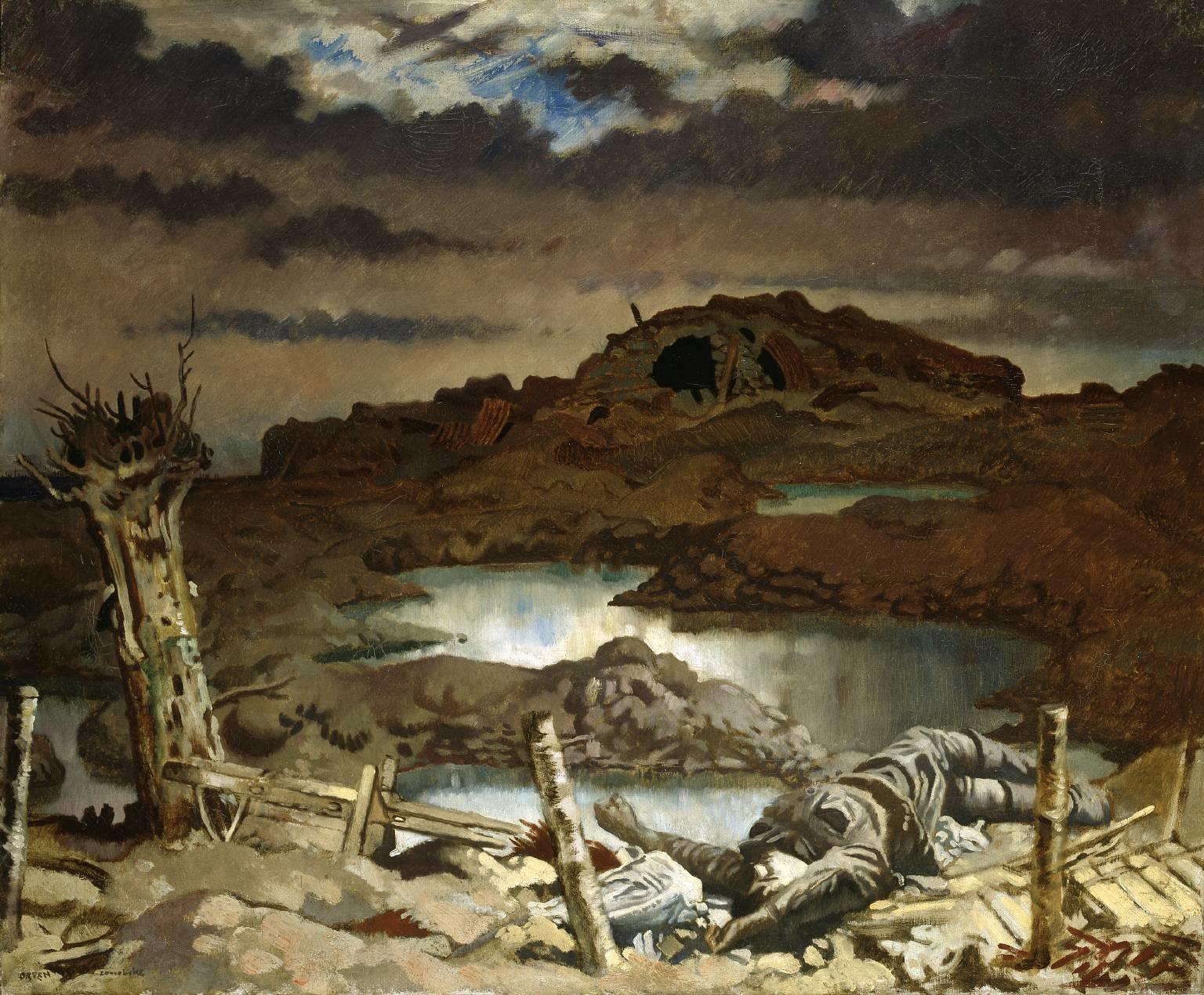
Description
Zonnebeke is a 1918 oil paint on canvas painting by William Orpen that depicts the carnage and the horrors of the Passchendaele campaign during World War I. The realistic war painting measures 635 x 762 mm (Penelope 19). At the center of the scene is a dead body of a man, who is supposedly a soldier, lying unburied in the totally destroyed environment during a heavy rainfall. The landscape has been destroyed by the heavy shelling and bombardment which took place during the military campaign and also by the heavy downpour. Pools of water are collecting in the ditches.
On the point where the dead body lies there is a totally destroyed make-shift bridge. On the left side of the scene there is a withered tree. In the background, once occupied bunkers lay open and occupied by rain water. There is completely no sign of life in the entire artwork as there is not even a sign of vegetation. Rubble and water-logged ditches are everywhere and the only artificial feature in the painting, which is the make-shift bridge, is badly destroyed. The dark colors and the static nature of the painting both in the foreground and the background give the implication of lack of life and hopelessness.
Analysis
The artist manages to capture the carnage left behind by the war through the ingenious use of color, lines, forms and shapes, texture, and space. He uses dark colors throughout the painting to depict the lack of life, the somber mood, and the desperate state emanating from the horrors of the war. The darkness of the clouds is reflected in the water-filled pools making the entire scenery dark. The vertical lines depict the havoc of the rain as it continued falling on the completely destroyed landscape.
Apart from the rain, everything else in the painting is presented as static and devoid of life. Organic shapes are used in the artwork to give the impression of a lack of human activity in the area. Texture is achieved through the use of color contrast as well as space (Penelope 20). The artist uses shades of black and white to show the depth and the rough texture of the landscape. The landscape is entirely rough. This depicts the destruction of the landscape as a result of the shelling and heavy bombardment. The hills in the background as well as the space in the foreground are totally rugged as a result of the destruction.
Interpretation
As a war artist, Orpen managed to capture the reality about the horrors and the destruction of the war in Zonnebeke. According to Penelope (21), the painting depicts the losses of human life, as well as the harm of the war on the natural environment in the most faithful manner. Considering that so many soldiers as well as civilians lost their lives in the campaign, the painting is a depiction of the desperation caused by the carnage.
As implied in the painting, the war was so intense that even soldiers had no time to carry their dead colleagues as they progressed in extending their battle lines or when retreating. The once vibrant landscapes now lie in debris after the war. The painting does not portray any human activity or buildings giving the implication that the entire place had been abandoned. Being at the war front, Orpen had the opportunity to capture the agonies of the wounded and the desperation and hopelessness of the situation in his painting.
Works Cited
Orpen, William. Zonnebeke,1918. Tate Gallery. London. Tate Gallery. Web. 19th May, 2015.
Penelope, Curtis (ed). Tate Britain Companion, A Guide to British Art. Tate Publishing. 2013. Print.